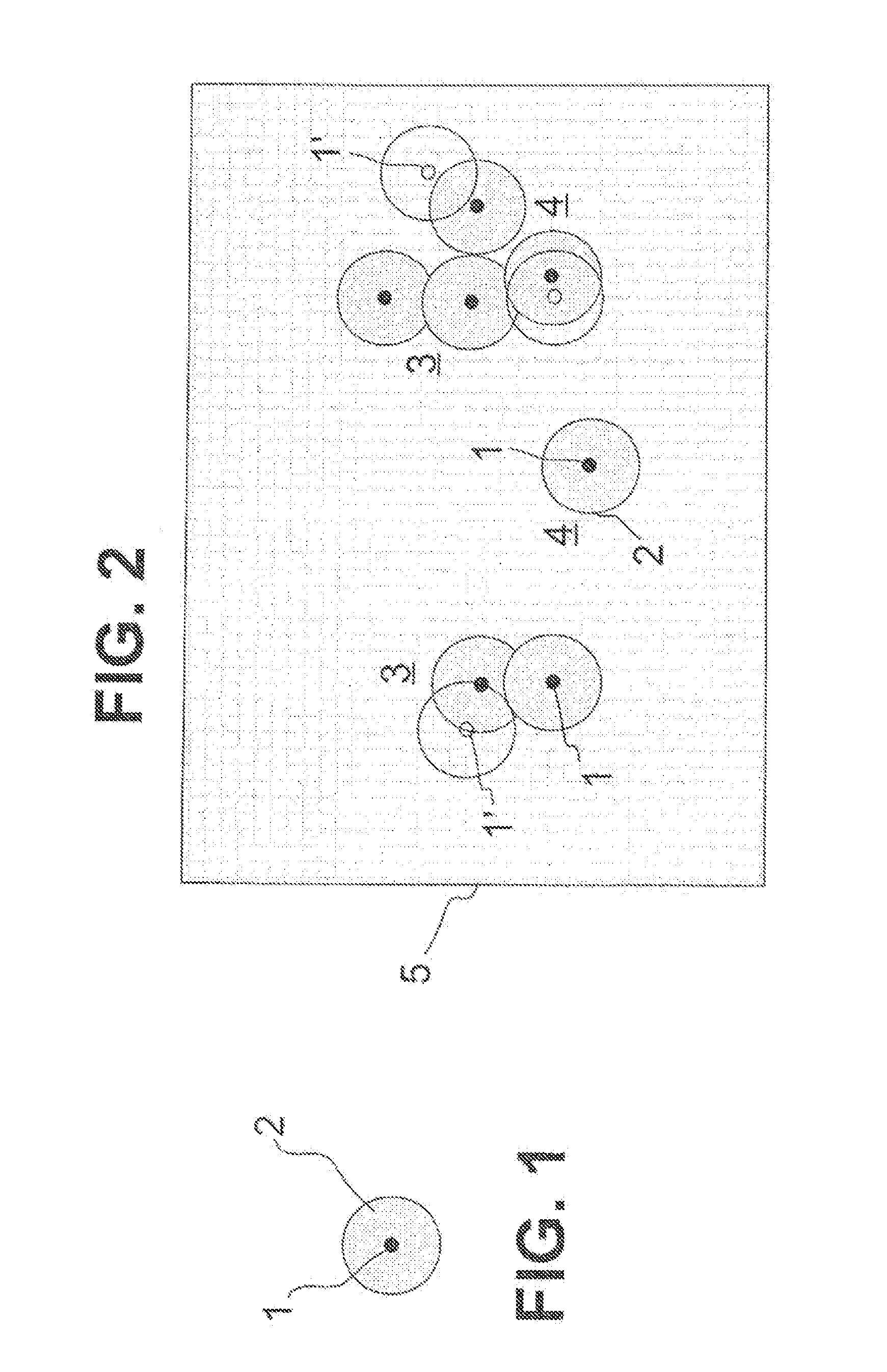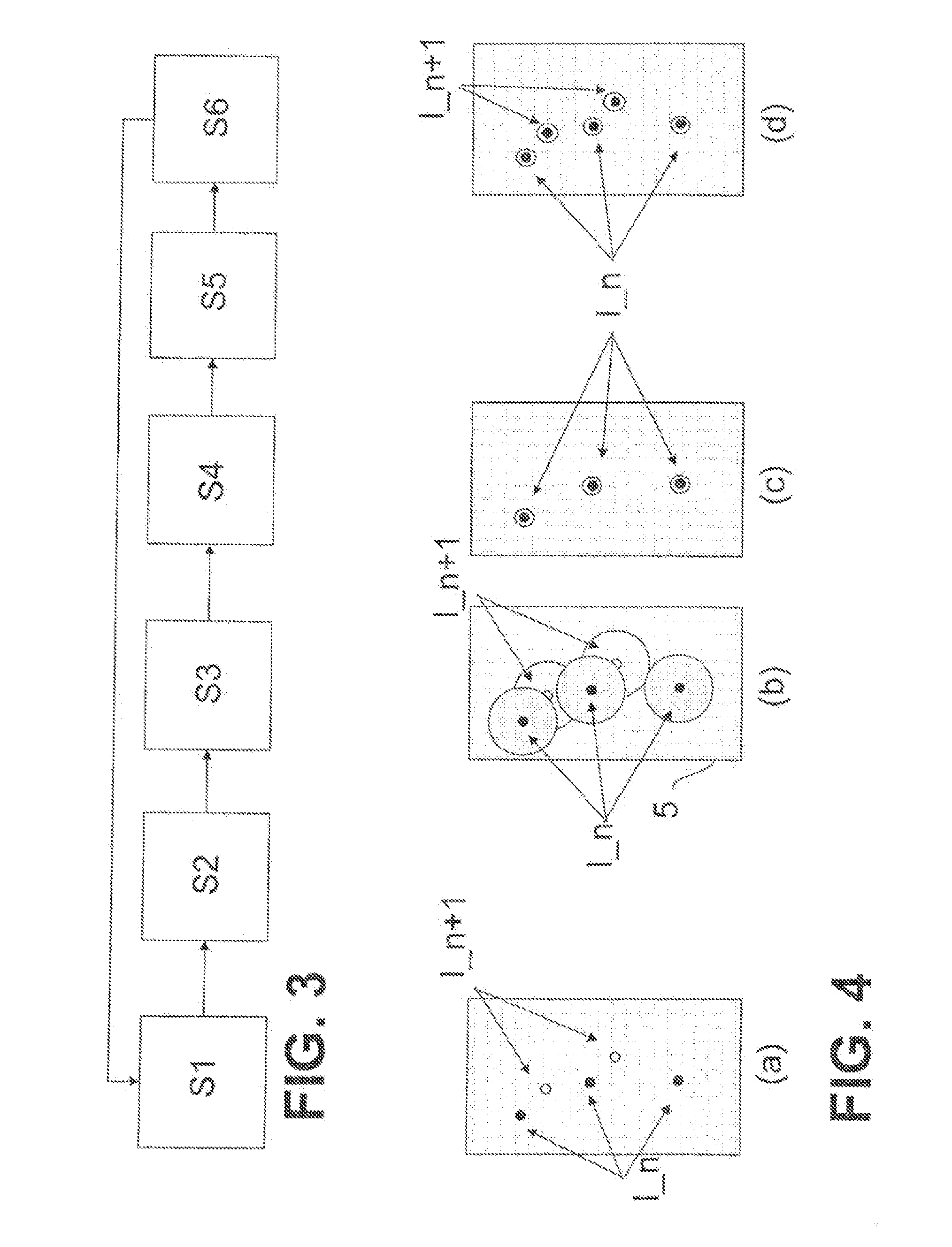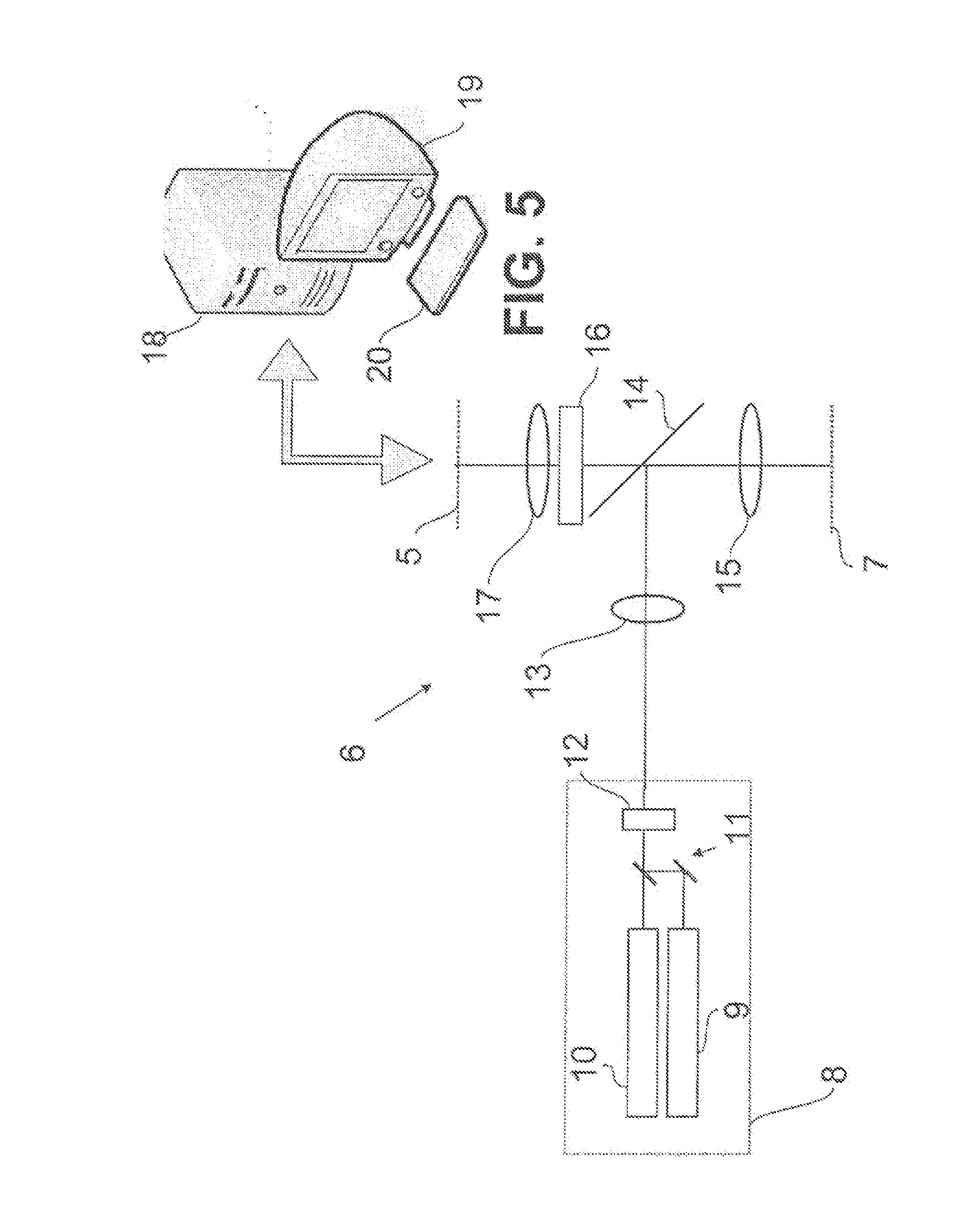Increased depth-resolution microscopy
a luminescence microscopy and depth-resolution technology, applied in the field of luminescence microscopy, can solve the problems of only achieving localization accuracy laterally, limiting the method to a two-dimensional sample analysis, and distortion of the image of the luminescent marking molecule, etc., and achieve good high resolution
- Summary
- Abstract
- Description
- Claims
- Application Information
AI Technical Summary
Benefits of technology
Problems solved by technology
Method used
Image
Examples
Embodiment Construction
[0044]Shown schematically in FIG. 1 is a marking molecule 1 that has been excited to fluorescence. Naturally, fluorescence detection requires a large number of excitations, since each excitation delivers exactly one fluorescence photon, and the detection of radiation requires integration of many fluorescence photons. On the basis of physical principles, the fluorescent radiation emitted by the marking molecule 1 can be detected only with a limited optical resolution in a microscope. Even if the microscope achieves the diffraction limit of the optical resolution, the photons of the fluorescent marking molecule 1 are still scattered because of diffraction, and are therefore detected in a diffraction disc 2. Thus, in principle, instead of representing the geometrical extent of the marking molecule 1, which in FIG. 1 is indicated schematically as a black circle, the microscope represents a larger object, which in FIG. 1 is illustrated by the diffraction disc 2. The size of the diffracti...
PUM
| Property | Measurement | Unit |
|---|---|---|
| wavelength | aaaaa | aaaaa |
| wavelength | aaaaa | aaaaa |
| wavelength | aaaaa | aaaaa |
Abstract
Description
Claims
Application Information
 Login to View More
Login to View More - R&D
- Intellectual Property
- Life Sciences
- Materials
- Tech Scout
- Unparalleled Data Quality
- Higher Quality Content
- 60% Fewer Hallucinations
Browse by: Latest US Patents, China's latest patents, Technical Efficacy Thesaurus, Application Domain, Technology Topic, Popular Technical Reports.
© 2025 PatSnap. All rights reserved.Legal|Privacy policy|Modern Slavery Act Transparency Statement|Sitemap|About US| Contact US: help@patsnap.com



